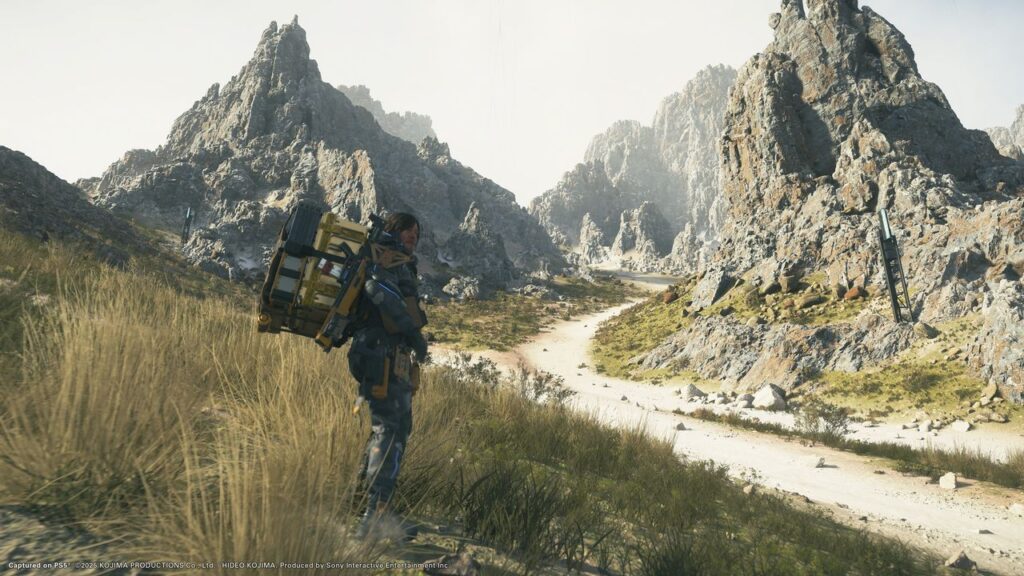On paper, Death Stranding’s world is about as bleak as a post-apocalypse can get. The earth’s population has dwindled from billions to what seems, at best estimate, to be hundreds of thousands. The only people who are truly safe outside are those with DOOMS, a strange condition that allows them to see (and either kill or outmaneuver) the hostile spirits of the dead. Though Sam delivers as many packages as the player can handle over the course of the games, he’s never greeted by someone opening the door and offering him a handshake, a hug, or a cup of coffee. Outside of the cutscenes that move the story forward, interactions with those you help are limited to stilted expressions of gratitude delivered by holograms. When Sam gets time off, he goes to a private room, where the player is given the options to shower, piss, or chug an energy drink—but never to interact with another human being.
The exception comes with the game’s enemies. The landscape is dotted with strongholds maintained by Brigands, who bogart resources, attack Sam on sight, and generally make nuisances of themselves. Combat has been much improved from the original Death Stranding, and while the stealth and action sequences are undeniably more varied and fun to play, they also detract from the game’s larger thematic goals: If the only people you ever encounter in the open world are trying to kill you—and can only be stopped with violence in return—how much can Death Stranding 2 really say about the importance of forging connections?
The game’s somewhat unsatisfying answer is to let non-player characters emphasize that the Brigands are only bad because society failed them. “Before it all went to hell, we should have tried to find common ground,” laments one of the many characters Sam links to the chiral network. Another, a renowned combat expert, reveals that he non-lethally subdued a group of attackers, then spoke to them and learned they only needed to be taught the survival skills that would allow them to live without violence. “In the end, all we had to do is talk to each other,” he says sagely.
This scene is almost touchingly naive in a real-world context where the politics of “When they go low, we go high” have been all but obliterated by a fascist’s boot eager to stomp on any face that voices even timid opposition. But that’s also the seductive paradox of Death Stranding’s greater parable, which puts a surprisingly hopeful spin on life in the post-apocalypse. Sam isn’t just delivering packages of rations and medicine; he’s delivering stuffed animals, vinyl records, and fan letters to grateful customers, including artists, musicians, and animal-welfare experts, who have refused to let the game’s grim world grind them down to mere survival.
Where does that leave Death Stranding’s hero, who gives so much and receives only “likes,” the game’s social media-inspired currency, in return? As played by Norman Reedus, Sam is a stoic, underdeveloped, and often completely flat character, especially when compared with the cast of weirdos who surround him. After spending dozens of hours with him across both games, I’d say Sam has exactly two identifiable personality traits: His undying love for Lou, and a favorite baseball cap that says “WHY ME?” on it, which at least shows he has some sense of humor about the Sisyphean nature of his job.


